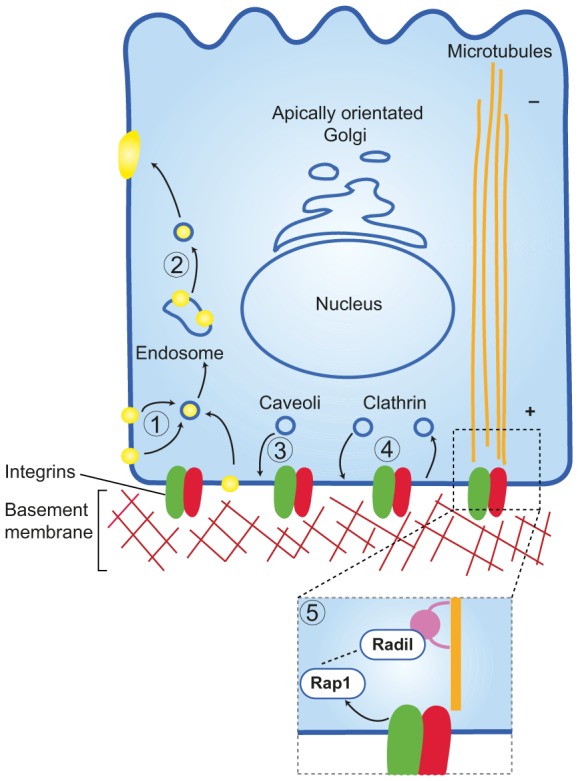Fig. 3.

Trafficking events required to establish basal membrane identity. Several trafficking events are involved in establishing basolateral membrane polarity. During polarity inversion, apical components such as tight junction proteins are trafficked away from the apical surface in a β1-integrin-dependent manner to create a basally defined surface (1). Rab-dependent endosomal trafficking is also required to transcytose apical components away from the basal surface in order to establish epithelial polarity (2). Caveolae are delivered to the basolateral surface in an ILK-dependent mechanism to establish basal caveolae signalling platforms that provide a distinct lipid microenvironment at the basolateral membrane (3). Clathrin-dependent trafficking is implicated in delivering Golgi-derived basolateral membrane proteins, such as the transferrin and LDL receptors, to the basal membrane (4). Radil sequestration and transport by Klf14, a component of plus-end-directed microtubule motors, regulates Rap1-mediated integrin signalling, which might control polarity originating at the basolateral membrane (5).
